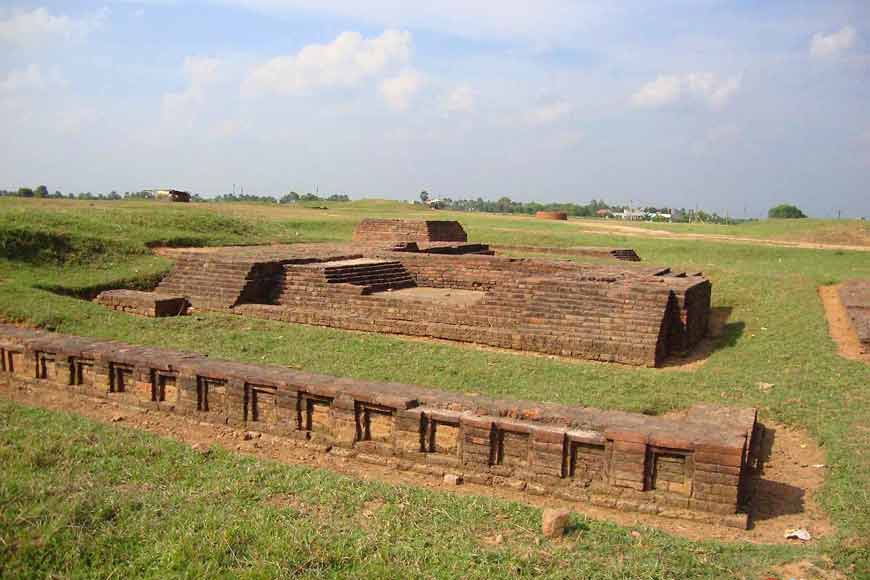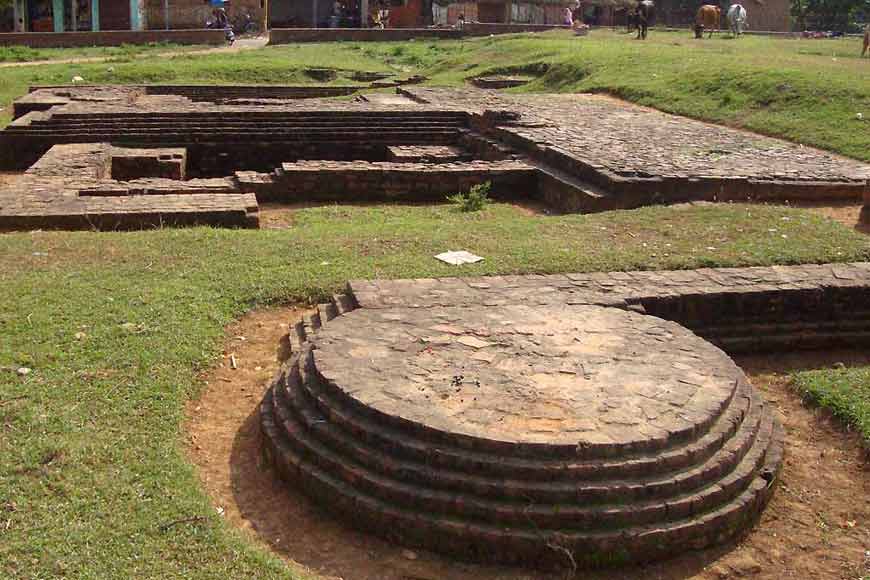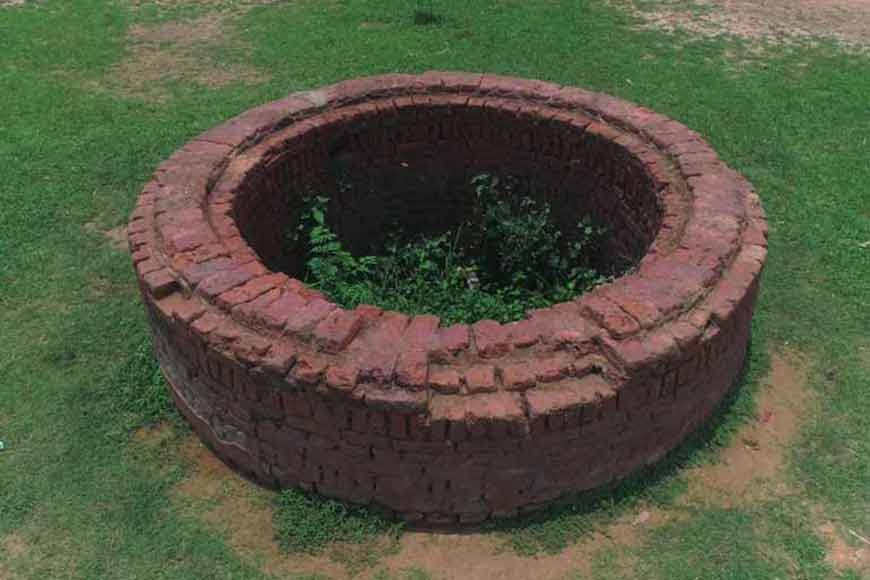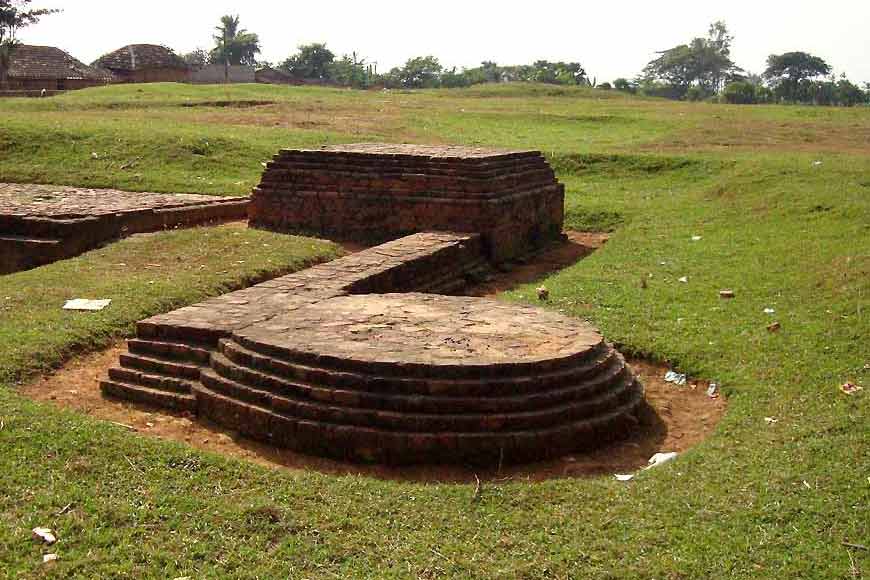Karnasuvarna: The first capital of independent Bengal was in Murshidabad

Shashanka was the first independent king of a unified polity of Bengal called Gauda and is a major figure in Bengal’s history. He reigned in 7th-century AD, though some historians place his rule between circa 600 C.E and 636/7 C.E. Other sources place his reign between 590 and 625 C.E. Shashanka was the contemporary of King Harshavardhan, ruler of Thanesar (present day Haryana). During his reign Karnasuvarna, his capital came to prominence. But where is this place in modern Bengal? It is in present-day Murshidabad. The place still has ruins of the ancient university of Raktamirtika Mahavihar, a leading education institute visited by famous Chinese traveller Hiuen Tsang. The origin of the Bengali calendar is attributed to Shashanka as the starting date of the calendar begins during his reign.

It is interesting to note that Karnasuvarna, the capital of the first important king of ancient Bengal, lies in a district, which was also the capital of the last independent Nawab of Bengal. Although technically the Nawabs were under the Mughal Emperors, but they reigned as independent rulers of Bengal. The ruins of Karnasuvarna have been located at Kansona in the present Murshidabad district. It is 9.6 kilometres south-west of Beharampore, headquarters of Murshidabad district. Legend has it that Karnasuvarna was the capital of the 'Anga' Kingdom that the Kaurava prince Duryodhana had gifted to his friend, Karna, the first born of Kunti.
The account is left by the famous Chinese traveller, Hiuen Tsang, in his itinerary Xiyu Ji, the only written record of the flourishing urban settlement of Karnasuvarna and Raktamrttika Vihar. According to his account Hiuen Tsang moved from Tamralipti (Tan-mo-li-ti), currently Tamluk in Medinipur, to the country of Karnasuvarna (Kie-lo-na-su-fa-la-na), near the capital of which was the Raktamrttika (Lo-to-mi-chih) Vihar.
It is interesting to note that Karnasuvarna, the capital of the first important king of ancient Bengal, lies in a district, which was also the capital of the last independent Nawab of Bengal. Although technically the Nawabs were under the Mughal Emperors, but they reigned as independent rulers of Bengal.
Hiuen-Tsang gives a graphic description of Karnasuvarna, which acquaints us with the locality and its people. According to him: “The country was well inhabited and the people were very rich. The land was low and moist, farming operations were regular, flowers and fruits were abundant, the climate was temperate and the people were good and friendly and were patrons of learning.” This description indicates the prosperous state of the country.

A glimpse of the religious life of Karnasuvarna can be obtained from the writings of Hiuen Tsang. People belonging to different religions lived there in harmony. Buddhism was a flourishing religion and Buddhists of the Sammatiya School resided in the 10 monasteries at Karnasuvarna. Apart from the monasteries there were also 50 Deva temples. Karnasuvarna was famous as a prosperous politico-administrative, military and religious urban centre. Its fame was, however, short-lived. It came into prominence with the rise of Shashanka in the early part of the 7th century AD and passed into oblivion by the end of that very century. Sadly, such an important capital city did not find mention in any of the many Pala and Sena records.
Hiuen-Tsang gives a graphic description of Karnasuvarna, which acquaints us with the locality and its people. According to him: “The country was well inhabited and the people were very rich. The land was low and moist, farming operations were regular, flowers and fruits were abundant, the climate was temperate and the people were good and friendly and were patrons of learning.” This description indicates the prosperous state of the country.
Hiuen Tsang also mentioned about Lo-to-mo-chi (Raktamrittika) Mahavihara, an important centre of learning of Vajrayana Buddhists near Karnasuvarna. The place has been identified with Rajbaridanga. The archaeological site of Rajbaridanga is about 2.4 km from Karnasuvarna railway station on the Azimganj-Katwa section of Eastern Railway. This site was first excavated by a team from the Department of Archaeology, University of Calcutta in 1962 under the direction of S.R. Das. Among the findings, the most significant one was a monastic seal bearing the legend of Sri Raktamrttika Mahavaihara. Other significant findings include terracotta figurines and ornamental stucco molds including human heads. Two other sites close by have been excavated at Rakshashidanga (in 1929-30 by K.N. Dixit of the Archaeological Survey of India) and Neel Kuthi.

After Shashanka’s death, Karnasuvarna briefly turned into a jayaskandhavara (camp of victory) of Bhaskaravarman, the king of Kamarupa. This is evident from his Nidhanpur copper-plate grant. In the mid-7th century, it was the capital of Jayanaga according to his Vappa Ghoshavata copper-plate grant. Gradually, Karnasuvarna lost its lustre and now it is a small village with ruins of its golden period scattered all over, living in the shadows of its glorious past.










